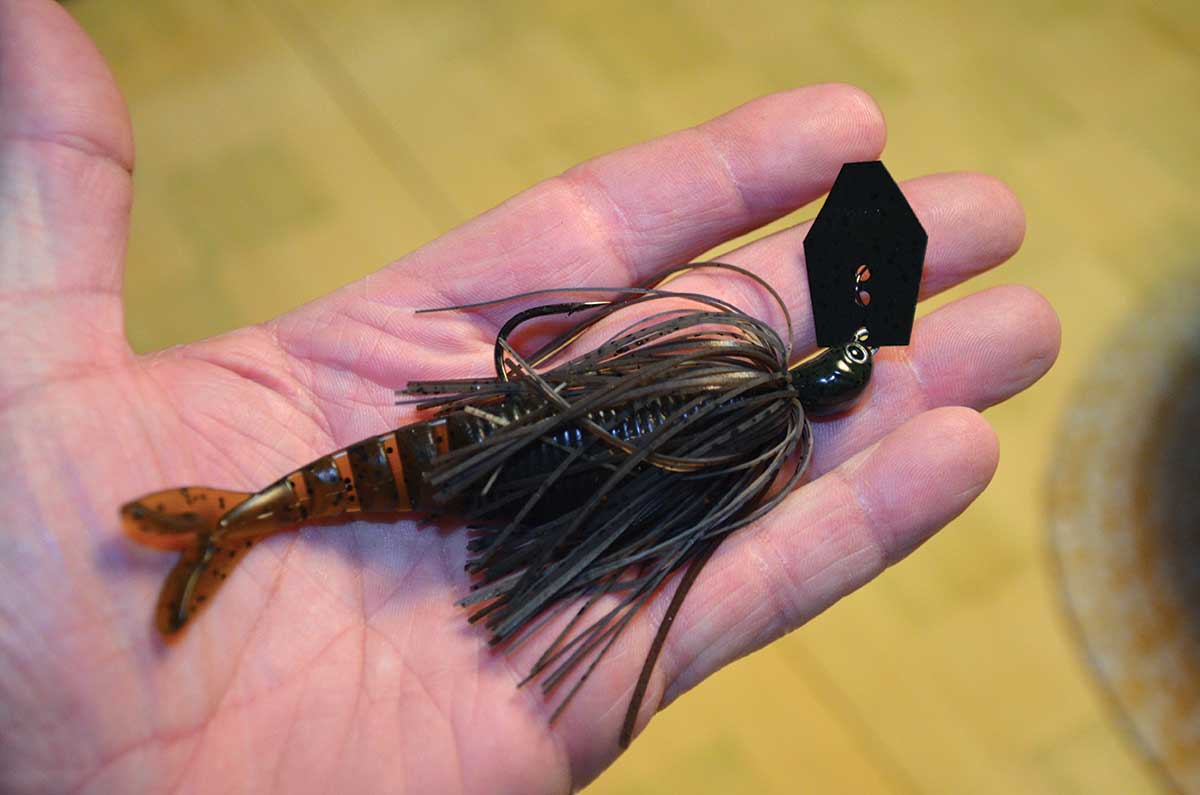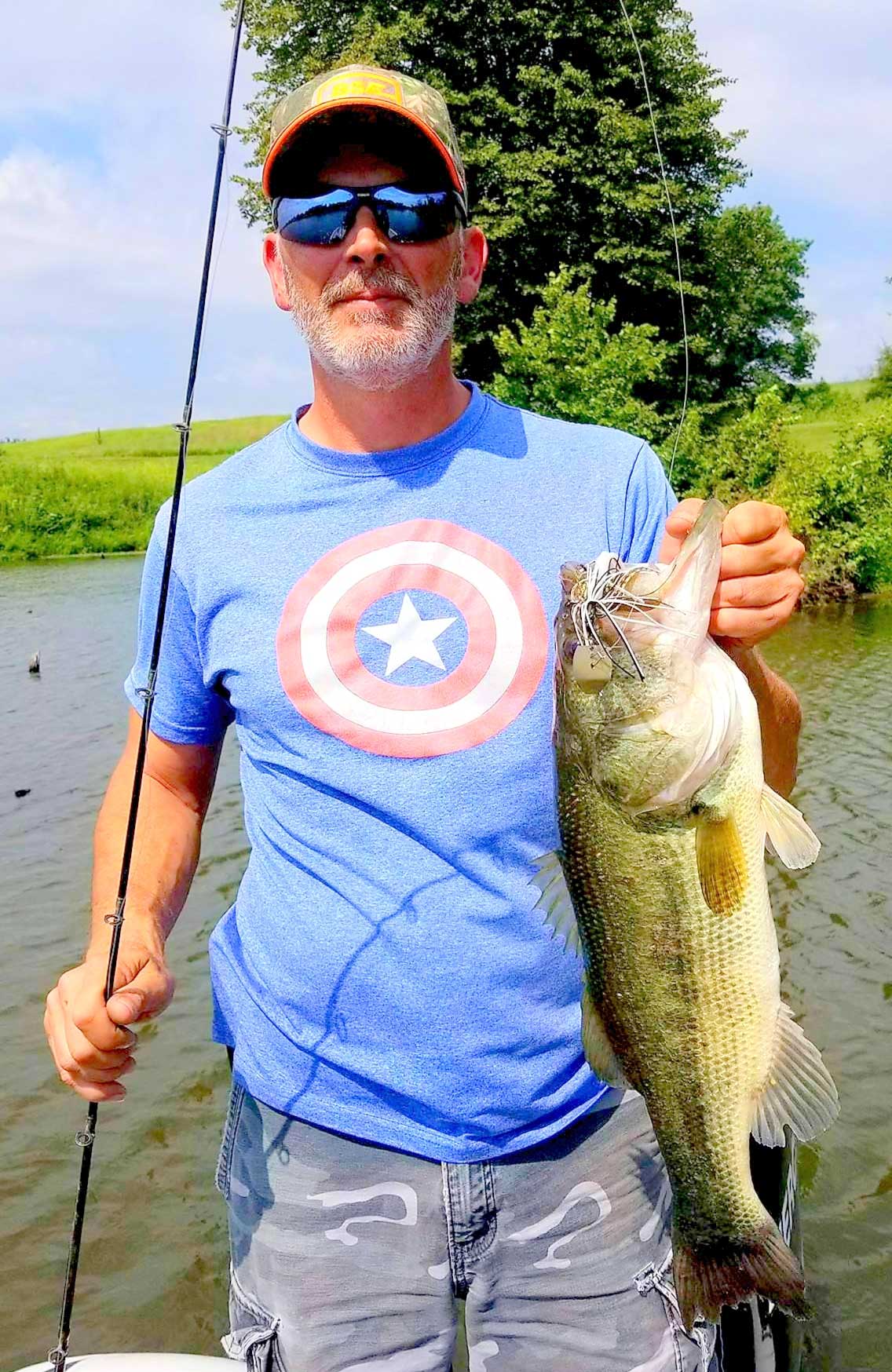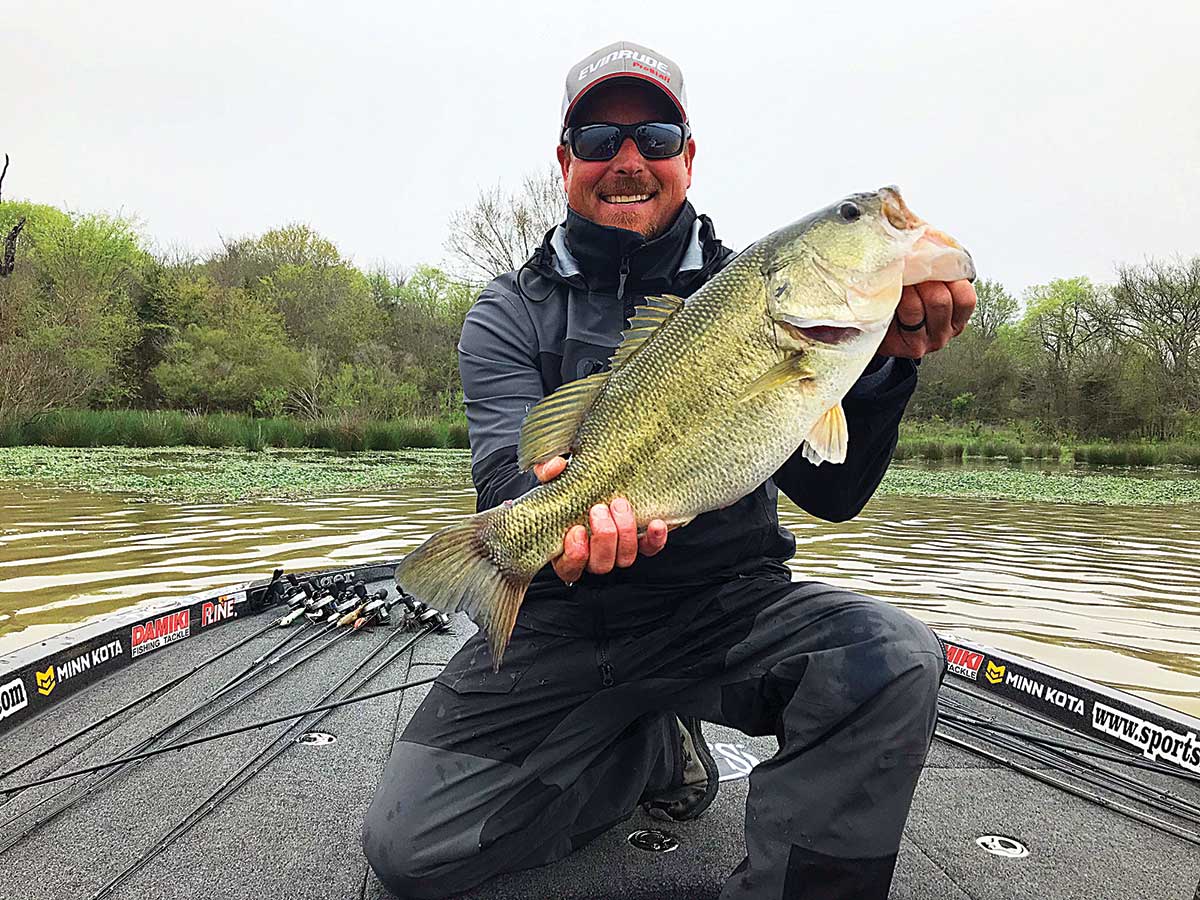
Anglers were slow to start using them, but the ChatterBait has become a household name in most bass angler’s arsenal.
The ChatterBait rage all began back in 2006 when angler Bryan Thrift drilled 10 bass weighing 36 pounds, 9 ounces to win the Stren Series Southeast Division event on Lake Okeechobee. After winning, Bryan Thrift commented, “Ron Davis invented the original ChatterBait in Greenwood, South Carolina, and I remember seeing my first one and knowing it had potential. Once I used it, I obviously could tell it had a place in bass fishing with all of the vibration.” This was a quote Bryan made to Tyler Brinks of FLW in February of 2020. Today Bryan always has a ChatterBait on a rod, or two for every tournament.
Another key spot in ChatterBait history was in 2014 when Brett Hite put on a clinic at Lake Seminole where he amassed a whopping four-day total of 97 pounds, 10 ounces to capture the title and $100,500 in prize money. In 2019, Brett again used a Z-Man Jack Hammer to land a Major League Fishing (MLF) record setting bass of 9 pounds, 12 ounces.

Although the bait was first introduced by Ron Davis as early as 2003 to some friends, in 2007 Z-Man acquired the ChatterBait and has since modified and improved on the design of the bait. Another player in the blade bait style is the Picasso Shock Blade, which came about from design ideas from Aaron Martens. Now there are a lot of blade baits out there from homemade lure builders and other lesser known brands.
Ready To Fish
The most important aspect of any blade bait, whether it be a Z-Man Jack Hammer, Custom or Project Z, Picasso Aaron Martens Shock Blade Vibrating Jig or any of the homemade jigs out there is the start of the blade after your cast; after ripping and pausing through grass; or a drop back. What I mean is the time it takes for the blade to begin its initial vibration. The closer the blade is to the jig head, the faster it starts up. The Jack Hammer has the blade directly attached to the jig, while some homemade jigs use double spilt rings. The Picasso offers a unique attachment point that is as close to the Jack Hammer set up as possible. There are some home-made blade baits that offer quality paint and components and they do catch their share of fish.
The next step is your trailer. There are two types of trailers I like to use on blade baits. The first is a crawfish imitator of some sort. The Big Bite Baits Fightin’ Frog, which comes in 3- and 4-inch models is my favorite, with the Berkley Pit Boss a close second. A relative newcomer to the market is the Yamamoto Cowboy, a bait with long craw type legs. The paddle tail type trailers are best used with crawfish patterns, the bait you are trying to imitate.
Moving to the swimming style trailers – Berkley Grass Pig, Keitech Swim, Yamamoto Zako or the author’s favorite, a Big Bite Cane Thumper, are a few. The Zako is a bait Brett Hite is swimming these days on his way to big bags for tournament wins. This trailer will give you a large profile, and you know what that could mean – big bass. The swimming trailers are best suited for colors matching forage in the lake – shad, perch, bluegills etc.



Versatility
Unlike some lures, the ChatterBait can be fished under almost any condition – pre-spawn, spawn, post, cold water, warm water, heavy or light cover, grass fields, stumps and docks. If there are bass in hiding, the ChatterBait will get them biting. In the early part of the season I like to throw the bait at the mouths of creeks or points. Bass will use these areas as staging points for the pre-spawn before heading to the actual spawning grounds. The key with these areas is to have the bait just skimming the bottom in a way where you can feel it touching, but not dragging.

Another area I like is any grass area close to deeper water. These areas are a bass holding magnet as they can lie in ambush, yet head deep if needed depending on weather or water temperature. For working the grass, I fish two different methods. The first is to fish it just above the grass tips, barely touching, but occasionally allowing it to fall into the grass. When this happens, and it hangs up slightly, rip it hard out of the grass and back to the top again. Another method would be to fish it in the grass and each time it hangs, rip it through. This hang up, rip, hang up, rip will often induce vicious strikes.
ChatterBaits are also effective in lily pads. I always fished spinnerbaits in lilies, and fishing a ChatterBait to me was no different. Make your cast past the field, or into an opening and then slowly and steadily reel the bait towards the pads. As it hits the pads, work it through, trying to avoid hanging up. You have to practice, but in essence you will be bouncing the bait off the pad stems. If it does hang up, ripping will usually break it free. In the pads, I like to use braided line as the braid seems to cut through stems if needed.
Have you ever flipped a jig under a dock? Well, your ChatterBait can achieve the same results if not better. Working it under a dock will result in a nerve wracking vibration that will trigger a response from the laziest bass. For me the key, and we mentioned this earlier, is the quickness of the blade beginning its vibration. This is crucial for docks. You want that blade vibrating fast, so after the flip allow it to settle them lift fast with your rod tip and begin reeling. This will get the blades vibrating quickly.
The Right Outfit

The rod and reel combo is another key factor when throwing the ChatterBait. There are several thoughts on this and all have valid reasoning. FLW Cup winner and current Major League Fishing (MLF) pro Bryan Thrift likes two rods. His first is the Fitzgerald Frog Swimbait Rod in a 7-foot 2-inch length. Even though he designed it for frog use, it really pairs well with a ChatterBait and allows long casts, but also offers a sensitive tip to feel the bite. The second is the Fitzgerald 6-foot 9-inch ChatterBait rod. This rod, with its shorter length allows a lot more control around wood or for skipping docks.
On the line end, I picked Bryan’s brain. Bryan will often have several rods spooled with P-Line tactical fluoro in 20- and 15-pound test. This way just by changing the rod, the bait can run at various depths with the same retrieve. The only time he uses braid is in heavy grass cover where the braid will give a lot more control over a fish that wants to wrap itself in grass.
I prefer the Abu Garcia Vendetta VTC73-6 matched to an Abu Garcia Revo S spooled with 17-pound fluorocarbon. I feel this gives me the best ability to cover an area, plus a fast enough tip to feel even the most subtle bite.
In speaking with other anglers, I found some like heavy braid when throwing a ChatterBait. I have heard of braid to 50 pounds with a 20-pound mono being used successfully. Ripping a bait through grass at times can be very easy with heavier braid. The bottom line is each angler has their own preference. It is up to you to decide what works best for yourself. For me, I am taking the Bryan Thrift thought process and sticking with the fluorocarbon, and maybe a little braid once in a while.
The ChatterBait has been around since Ron Davis invented it in the early 2000s. Changes have been made for the better, and now Z-Man owns the brand. Anglers were slow to start using them, but after Thrift’s win, the ChatterBait has become a household name in most bass angler’s arsenal. If you have not tried a ChatterBait, give them a try this season. My bet is that you too will become a believer in their fish catching ability.
| THE BRYAN THRIFT ADVANTAGE |
|---|

TM: What is your favorite place to throw a ChatterBait? |



